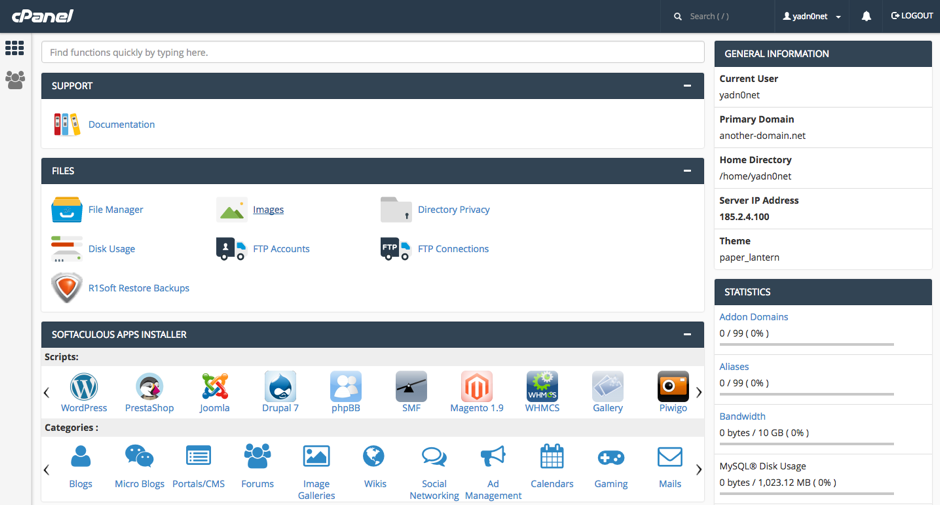
FTP passive vs active is an important consideration for most users, especially when they are using their FTP client behind a firewall. Passive mode is easier to use than active mode and is compatible with NAT routers and firewalls.
FTP is a protocol that uses the Internet (IP) to transfer files between computers using a client or server. FTP protocol consists of a data and a commands channel that are both used to transfer information between client and server.
The client initiates a command channel with the FTP Server by sending a TCP port 21 PORT command. The server will respond by connecting to the specified client data ports on its local port, typically TCP Port 20.
The connection will work unless your FTP client is hidden behind a firewall. In that case, the client's firewall will block the incoming connection request from the FTP server, which would prevent the file transfer from occurring.

To solve the problem, you can change your client's mode. In passive FTP mode, the FTP server still initiates the channel of command but sends a PASV instead. The FTP servers replies to PASV commands by indicating a (randomly selected) data port for the transfer.
In Active Mode, the client will also send a PORT to initiate a data channel between the FTP server and the client. This is a reverse data-channel, which is not as friendly to firewalls and NAT routers as passive mode.
Software firewalls secure networks, limiting traffic on certain ports. It is done to prevent unauthorized access but it can cause problems with FTP.
Network Address Translation (NAT), or NAT devices, are another popular way to block unauthorized connections. These devices can be used to allow multiple computers access to a single IP, but also serve as firewalls if connections are coming from the outside. NATs are particularly good at blocking connections to internal servers, but can be difficult to configure for firewall support.
In order to reduce the amount of responsibility that the client has for the firewall configuration, the passive mode was developed. In passive-mode, the client continues to initiate the control channels on port 21, and instead of sending an PORT command sends a PASV. This command asks the FTP server for an IP address, port number and data channel to be created by the client.

When you run Fetch on a firewall, and you receive an error when trying to connect, the Automatic Passive Mode will be automatically switched to passive mode. If this does not work, you can manually enable passive mode by selecting the Passive Mode option from the FTP Settings menu.
The choice between active and passive is up to the client, but passive mode usually works better with NATs and firewalls. A client can be configured so that it only uses a certain range of high level ports on the servers. This limits the number of ports which can be blocked by firewalls. This also reduces the risks to the server of a blocking firewall.
FAQ
WordPress is it a CMS?
Yes. It's a Content Management System. Instead of using Dreamweaver or Frontpage, a CMS lets you manage your website content directly from your web browser.
WordPress is absolutely free! Hosting, which is usually provided by your ISP, is free.
WordPress was originally designed to be a blogging platform. However, WordPress now offers many options including eCommerce sites and forums, membership websites, portfolios and portfolios.
WordPress is easy and quick to install. To install WordPress, you will need to download the installer file from their website. Once it is downloaded, upload it to your server. You can then visit your domain name using your web browser to log in to your new website.
After installing WordPress on your computer, you'll need a username and a password. After logging in, you will see a dashboard that allows you to access all your settings.
Here you can add pages and posts, images, menus, widgets and plugins. If editing and creating new content is easier for you, skip this step.
If you prefer to work with a professional web designer, you can hire them to manage the entire process.
Can I create my own website with HTML & CSS?
Yes! If you've read this far, you should now know how to create a website.
Now that you know how to create the structure of a website, you'll also need to learn some HTML and CSS coding.
HTML stands for HyperText Markup Language. You can think of it as writing a recipe. You'd list the ingredients, instructions, along with directions. HTML can also be used to inform a computer if certain parts of text should appear bold, underlined and italicized. It is the language of documents.
CSS stands for Cascading Style Sheets. It is like a stylesheet that you use to create recipes. Instead of listing each ingredient or instruction, you will write down the general rules for font sizes and spacing.
HTML tells the browser how a page should look; CSS tells it what to do.
Don't be afraid to ask questions if you don’t understand any of these terms. Follow these tutorials to create beautiful websites.
Can I create my own website with HTML & CSS?
Yes, you can! You'll need to be familiar with web design concepts and programming languages such HTML (Hyper Text Markup Language), CSS, and CascadingStyle Sheets. These two languages make it possible to create websites accessible by all who have an internet connection.
Statistics
- Did you know videos can boost organic search traffic to your website by 157%? (wix.com)
- It's estimated that chatbots could reduce this by 30%. Gone are the days when chatbots were mere gimmicks – now, they're becoming ever more essential to customer-facing services. (websitebuilderexpert.com)
- Is your web design optimized for mobile? Over 50% of internet users browse websites using a mobile device. (wix.com)
- When choosing your website color scheme, a general rule is to limit yourself to three shades: one primary color (60% of the mix), one secondary color (30%), and one accent color (10%). (wix.com)
- It enables you to sell your music directly on your website and keep 100% of the profits. (wix.com)
External Links
How To
How to use WordPress for Web Design
WordPress is a tool for creating websites and blogs. The main features include easy installation, powerful theme options, plug-ins, and many others. This website builder lets you customize your site to suit your preferences. It comes with hundreds of themes and plugins that help you make any site. If you wish, you can add your domain name. These tools allow you to easily manage the appearance and functionality of your website.
WordPress can help you create stunning sites even without knowing how to code HTML. It doesn't matter if you don’t know much about coding. You can create a beautiful website in no time. We'll walk you through how to install WordPress on your PC and show you the basics of getting your blog online. We'll explain everything so you can follow along at home.
WordPress.com is currently the most used CMS (Content Management System). It has approximately 25 million worldwide users and counting. Two versions of WordPress are available. You can either get a license from them at $29/month or you can download the source code for free.
WordPress is often chosen for its blogging platform because of many factors. WordPress is simple to use. Anyone can create great-looking websites by learning HTML. Its flexibility is another advantage. WordPress.org allows you to modify the look and feel of any site with many themes at no cost. And finally, it is highly customizable. Numerous developers offer premium addons that enable you to automatically update posts whenever someone comments on them, or integrate social sharing into your website.